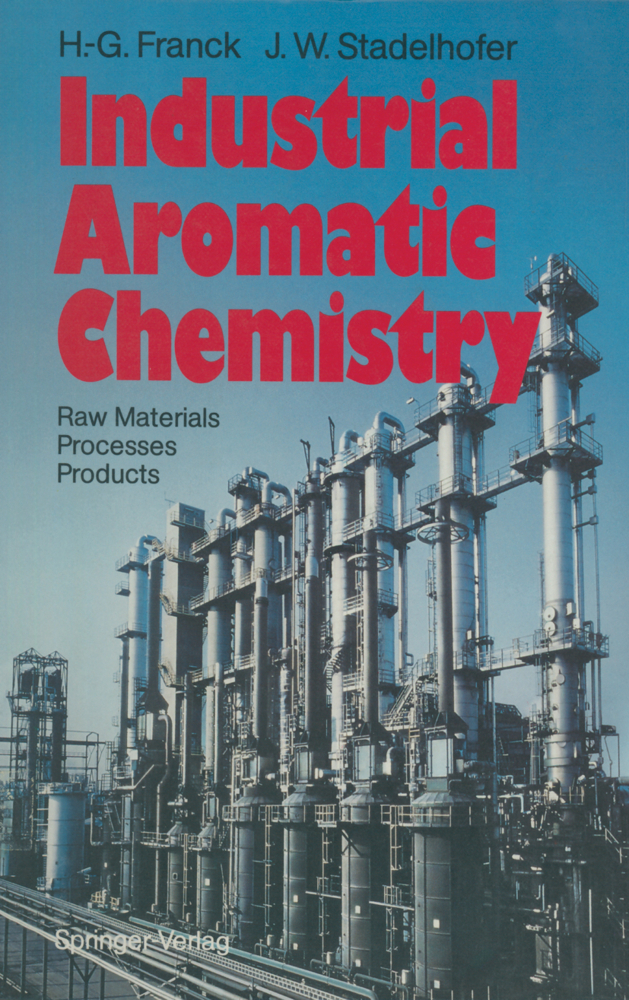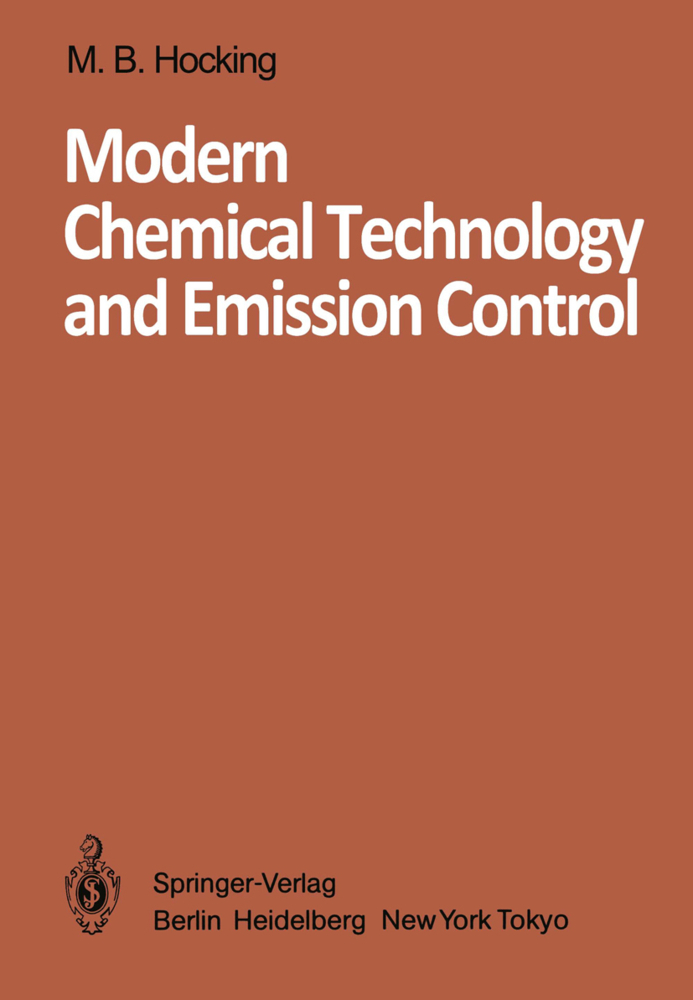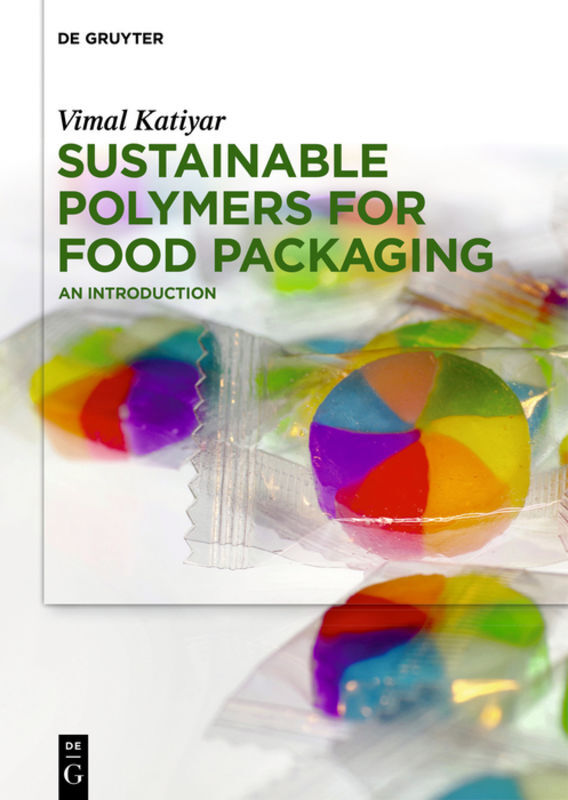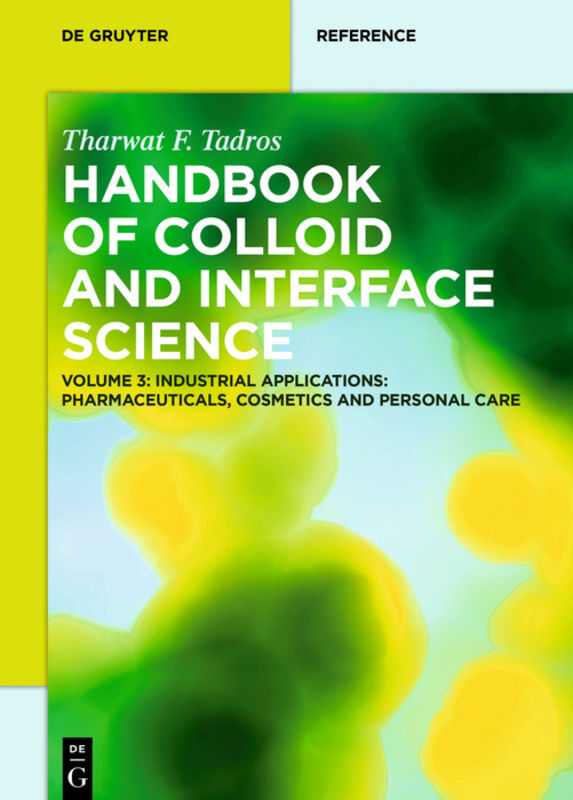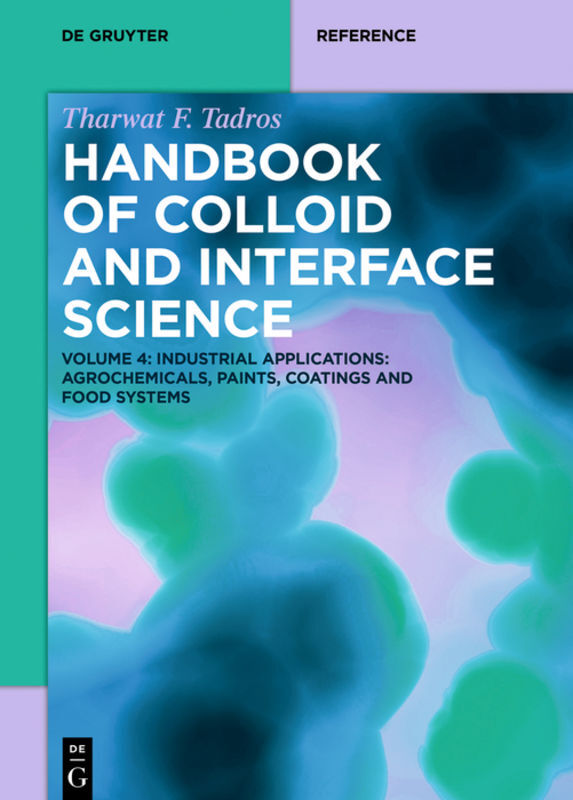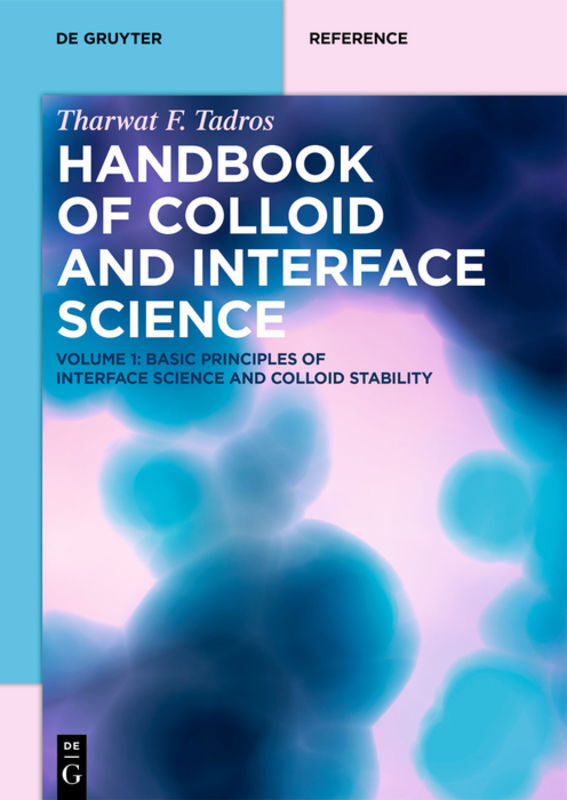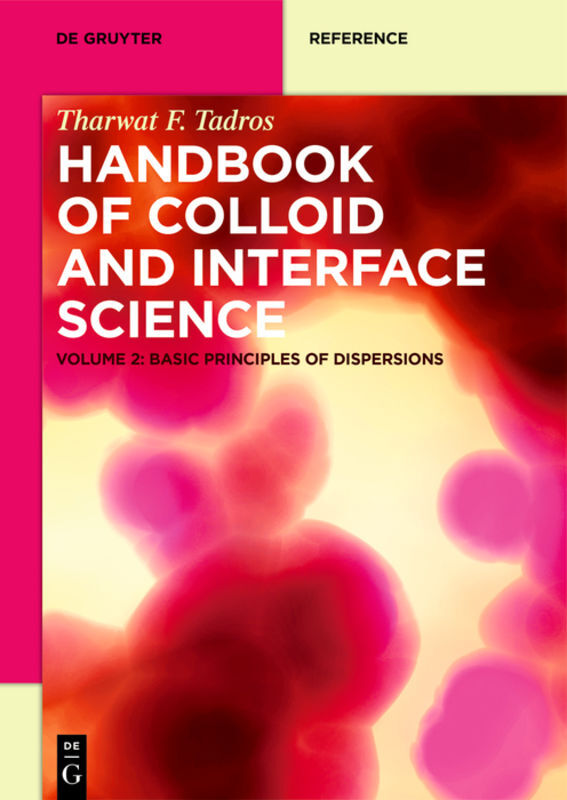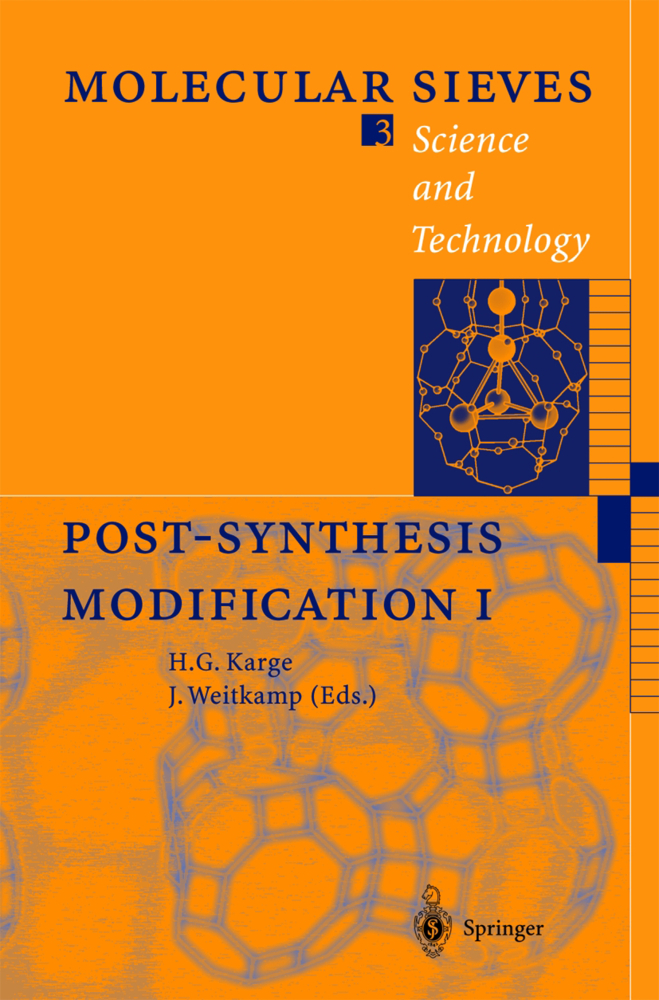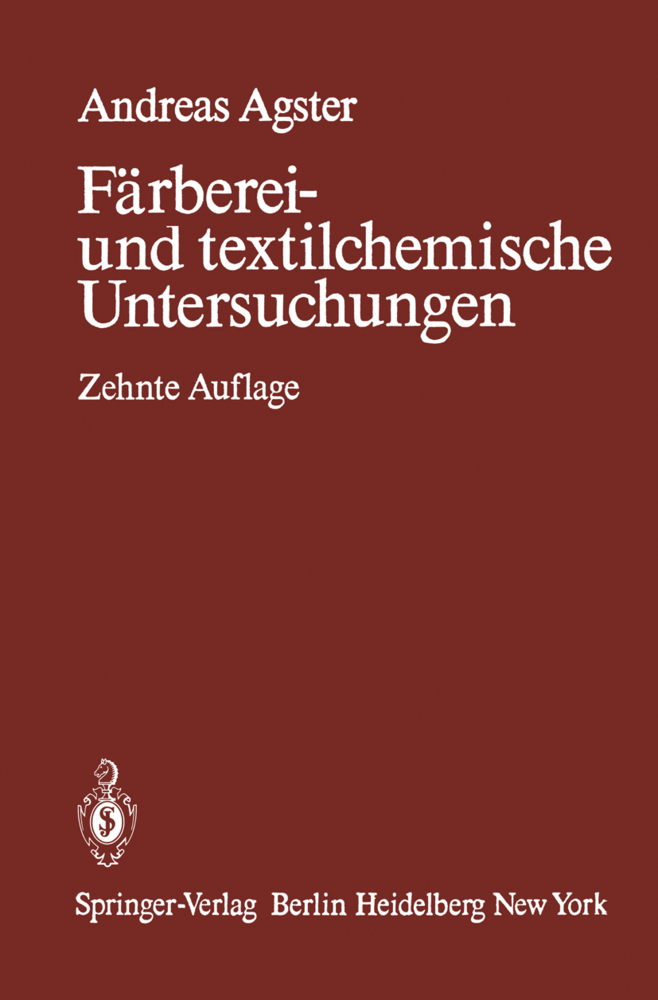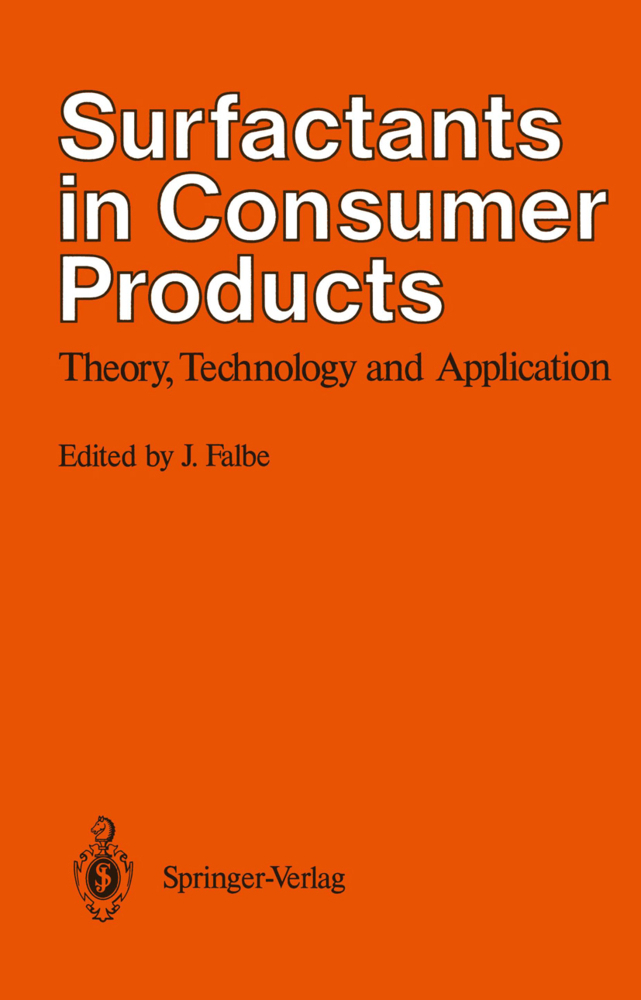Industrial Aromatic Chemistry
Raw Materials · Processes · Products
Industrial Aromatic Chemistry
Raw Materials · Processes · Products
Aromatic organic hydrocarbons and heterocycles represent a bulk of about one third of all industrially produced organic basic materials. Aromatic compounds such as benzene, phenol, naphthalene, anthracene, and their homologues, are derived from raw materials, coal, crude oil and biogenic resources by thermal and catalytic refining processes. This book introduces the chemistry of aromatics with a brief discussion of the aromatic character and a survey of historical aspects, particularly the development of the organic dye industry during the 19th century. The main emphasis of the book is to give a clear prospect of industrial processes for the production and the derivatisation of aromatics with consistent flow diagrams. Economical aspects of by- and side-products are especially regarded. For the most important aromatics an analysis of the international market included their derivatives: polymers, pesticides, dyes, pigments and drugs. Professional scientists, managers and students in chemistry and chemical engineering will find a wealth of information for their career and daily work.
2.1 Molecular considerations
2.2 Mechanistic considerations
2.3 Nomenclature
3 Base materials for aromatic chemicals
3.1 Origin of fossil raw materials and their composition
3.2 Coal
3.3 Crude oil
3.4 Production of aromatic hydrocarbons with zeolites
3.5 Renewable raw materials
3.6 Summary review of processes for the production of aromatics
4 Production of benzene, toluene and xylenes
4.1 History
4.2 Pre-treatment of mixtures containing crude aromatics
4.3 Separation of mixed aromatics into individual constituents
4.4 Dealkylation, isomerization and disproportionation reactions of BTX aromatics
4.5 Quality standards
4.6 Economic data
4.7 Process review
5 Production and uses of benzene derivatives
5.1 Ethylbenzene
5.2 Cumene
5.3 Phenol
5.4 Benzene hydrogenation - cyclohexane
5.5 Nitrobenzene and aniline
5.6 Alkylbenzenes and alkylbenzene sulfonates
5.7 Maleic anhydride
5.8 Chlorobenzenes
5.9 Process review
6 Production and uses of toluene derivatives
6.1 Nitro-derivatives of toluene
6.2 Benzoic acid
6.3 Chlorine derivatives of toluene
6.4 Sulfonic acid derivatives of toluene
6.5 Toluenesulfonyl chloride
6.6 Other toluene derivatives
7 Production and uses of xylene derivatives
7.1 o-Xylene and its derivatives
7.2 m-Xylene and its derivatives
7.3 p-Xylene and its derivatives
8 Polyalkylated benzenes - production and uses
8.1 Pseudocumene
8.2 Mesitylene
8.3 Durene
8.4 Other eumene derivatives
8.5 Indan and indene
9 Naphthalene - production and uses
9.1 History
9.2 Naphthalene recovery
9.3 Naphthalene derivatives
9.4 Process review
10 Alkylnaphthalenes and other bicyclic aromatics-production and uses
10.1 Biphenyl
10.2 Methylnaphthalenes
10.3 Acenaphthene/acenaphthylene
11 Anthracene - production and uses
11.1 Production of anthracene
11.2 Production of anthraquinone
11.3 Anthraquinone derivatives
11.4 Higher condensed dyes from anthraquinone
11.5 Anthraquinone as a catalyst in the production of hydrogen peroxide
11.6 Wood pulping with anthraquinone
12 Additional polynuclear aromatics - production and uses
12.1 Phenanthrene
12.2 Fluorene
12.3 Fluoranthene
12.4 Pyrene
13 Production and uses of carbon products from mixtures of condensed aromatics
13.1 Pyrolysis of aromatic hydrocarbon mixtures in the liquid phase
13.2 Pyrolysis of mixtures of aromatics in the gas phase - Carbon black production
14 Aromatic heterocyclics - production and uses
14.1 Five-membered ring heterocyclics
14.2 Six-membered ring heterocyclics
14.3 Pyrimidine
14.4 Triazines
14.5 Condensed heterocyclics
15 Toxicology/Environmental aspects
15.1 Basic toxicological considerations
15.2 Aspects of occupational medicine and legislation
15.3 Environmental aspects and biological degradation of aromatics
16 The future of aromatic chemistry.
1 History
2 The nature of the aromatic character2.1 Molecular considerations
2.2 Mechanistic considerations
2.3 Nomenclature
3 Base materials for aromatic chemicals
3.1 Origin of fossil raw materials and their composition
3.2 Coal
3.3 Crude oil
3.4 Production of aromatic hydrocarbons with zeolites
3.5 Renewable raw materials
3.6 Summary review of processes for the production of aromatics
4 Production of benzene, toluene and xylenes
4.1 History
4.2 Pre-treatment of mixtures containing crude aromatics
4.3 Separation of mixed aromatics into individual constituents
4.4 Dealkylation, isomerization and disproportionation reactions of BTX aromatics
4.5 Quality standards
4.6 Economic data
4.7 Process review
5 Production and uses of benzene derivatives
5.1 Ethylbenzene
5.2 Cumene
5.3 Phenol
5.4 Benzene hydrogenation - cyclohexane
5.5 Nitrobenzene and aniline
5.6 Alkylbenzenes and alkylbenzene sulfonates
5.7 Maleic anhydride
5.8 Chlorobenzenes
5.9 Process review
6 Production and uses of toluene derivatives
6.1 Nitro-derivatives of toluene
6.2 Benzoic acid
6.3 Chlorine derivatives of toluene
6.4 Sulfonic acid derivatives of toluene
6.5 Toluenesulfonyl chloride
6.6 Other toluene derivatives
7 Production and uses of xylene derivatives
7.1 o-Xylene and its derivatives
7.2 m-Xylene and its derivatives
7.3 p-Xylene and its derivatives
8 Polyalkylated benzenes - production and uses
8.1 Pseudocumene
8.2 Mesitylene
8.3 Durene
8.4 Other eumene derivatives
8.5 Indan and indene
9 Naphthalene - production and uses
9.1 History
9.2 Naphthalene recovery
9.3 Naphthalene derivatives
9.4 Process review
10 Alkylnaphthalenes and other bicyclic aromatics-production and uses
10.1 Biphenyl
10.2 Methylnaphthalenes
10.3 Acenaphthene/acenaphthylene
11 Anthracene - production and uses
11.1 Production of anthracene
11.2 Production of anthraquinone
11.3 Anthraquinone derivatives
11.4 Higher condensed dyes from anthraquinone
11.5 Anthraquinone as a catalyst in the production of hydrogen peroxide
11.6 Wood pulping with anthraquinone
12 Additional polynuclear aromatics - production and uses
12.1 Phenanthrene
12.2 Fluorene
12.3 Fluoranthene
12.4 Pyrene
13 Production and uses of carbon products from mixtures of condensed aromatics
13.1 Pyrolysis of aromatic hydrocarbon mixtures in the liquid phase
13.2 Pyrolysis of mixtures of aromatics in the gas phase - Carbon black production
14 Aromatic heterocyclics - production and uses
14.1 Five-membered ring heterocyclics
14.2 Six-membered ring heterocyclics
14.3 Pyrimidine
14.4 Triazines
14.5 Condensed heterocyclics
15 Toxicology/Environmental aspects
15.1 Basic toxicological considerations
15.2 Aspects of occupational medicine and legislation
15.3 Environmental aspects and biological degradation of aromatics
16 The future of aromatic chemistry.
Franck, Heinz-Gerhard
Stadelhofer, Jürgen W.
| ISBN | 978-3-642-73434-2 |
|---|---|
| Artikelnummer | 9783642734342 |
| Medientyp | Buch |
| Auflage | Softcover reprint of the original 1st ed. 1988 |
| Copyrightjahr | 2011 |
| Verlag | Springer, Berlin |
| Umfang | XIV, 486 Seiten |
| Abbildungen | XIV, 486 p. |
| Sprache | Englisch |

